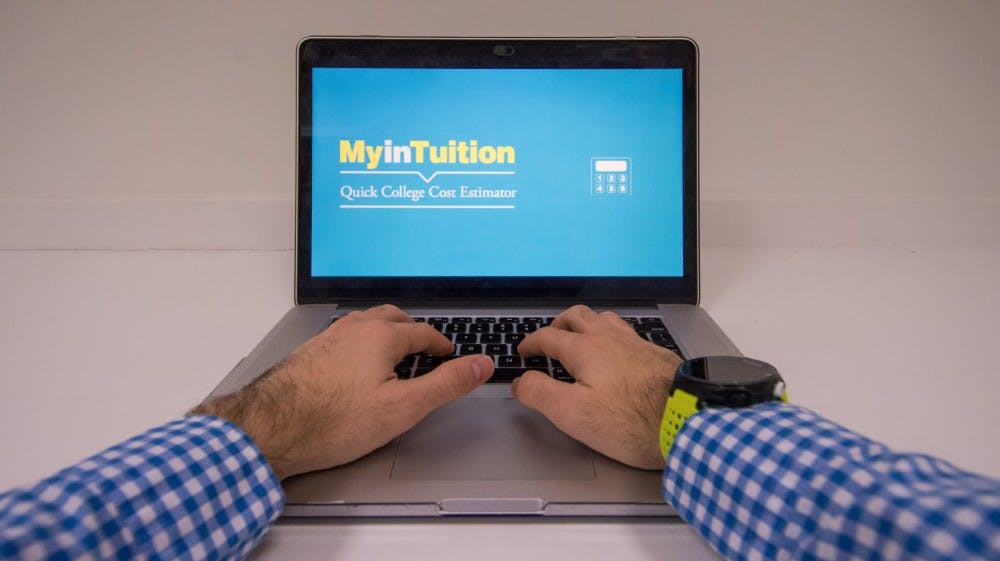Penn's cost of attendance is over $70,000. For many, the prospect of applying for financial aid and navigating the process correctly can be daunting. In an effort to help demystify university policy regarding aid, Penn is looking into adopting a new financial aid calculator.
MyinTuition, developed by Wellesley College Economics professor Phillip Levine, is a financial aid calculator that allows prospective college students to get an estimate of what their financial aid package might look like in a fast and easy way.
With just a brief three minute questionnaire, the calculator’s speedy and accurate approach to delivering cost estimates has caught onto many colleges and universities nationwide.
University Director of Financial Aid Elaine Papas-Varas said that she is interested in bringing MyinTuition to Penn.
The calculator would serve as a new tool for applicants to use in Penn's admissions page or portal so that they could quickly and easily compare costs with other schools that have MyinTuition in place, she said.
“It’s a great, simple, easy tool," said Papas-Varas. “I’m really impressed it’s picked up so quickly.”
Recently, the issue of financial aid has become more prevalent on campus. Student Residential and Financial Services changed the amount of financial aid students off campus would receive last spring, and many students said they were never notified of the shift.
SRFS changed its policy on financial aid for fifth-year students, many of whom were then informed they would not be receiving the aid they said they had been granted.
RELATED:
Penn announced a new executive director of Student Registration and Financial Services
Penn reduced financial aid for students living off campus, but many were never notified
Penn’s current financial aid calculator is provided by the College Board and is accessible to all prospective students, but the process can be cumbersome and time-consuming as it requires numbers from tax returns and W-2 forms.
The existing calculator was implemented after the 2011 Obama-era policy that mandated colleges to offer net price calculators on their websites. It is meant to cover a lot of financial ground, taking in a variety of assets, income types, and family circumstances.
“It’s a very involved, very detailed calculator,” Papas-Varas said. “The intention is to try to get closer to what will actually be the package.”
In contrast, MyinTuition is less concerned with capturing every intricacy of a student’s finances.
“MyinTuition does not satisfy the federal requirements, but it has the advantage of providing a much easier interface, and much easier questions to answer, and it takes less time,” Levine said. “People actually complete it.”
Papas-Varas added that MyinTuition helps remedy "sticker-price shock" so that families can more accurately gauge which colleges fit into their budgets. This effect would help Penn improve its outreach efforts, she said.
“It’s very difficult for any private institution that has a significant high cost to message that you should still apply and see what the institution can offer you,“ said Papas-Varas. “Families see a dollar number and they just walk away."
Since Wellesley first adopted the new calculator in 2013, the tool has spread to 31 schools, including several Ivy League peers like Yale University and Columbia University.

Yale most recently adopted the calculator this month to complement its existing net price calculator. Unlike its traditional calculator, MyinTution allows prospective students to get an estimate of their financial aid value just by answering six simple questions, without submitting any paperwork, Yale Daily News reported.
Levine decided to create MyinTuition after experiencing difficulties with his son's financial aid process.
Levine found that combing through university sites left him with a trove of unanswered questions over his son’s financial aid eligibility. Soaring tuition prices and often ambiguous need-based guarantees made finding a trustworthy estimate of college costs difficult to find.
“That led me to realize that there was a serious problem out there,” Levine told The Daily Pennsylvanian.
Dissatisfaction with the complexity and shock factor associated with paying for college led Levine to design the simple alternative to sifting through blocks of text on financial aid sites.
Lucia Ortega, a Wellesley junior studying Spanish and Chemistry, said that her financial aid award matched MyinTuition's estimate exactly.
“I come from a low-income household and Wellesley paid almost everything,” said Ortega.
As Levine is working to expand MyinTuition’s reach across undergraduate institutions, Papas-Varas is hoping to give families a clearer view of what Penn can offer them, even before committing.
“We really need to give applicants and families an opportunity to see, ‘How do I manage the cost and know ahead of time before arriving at a school campus?’” she said.



